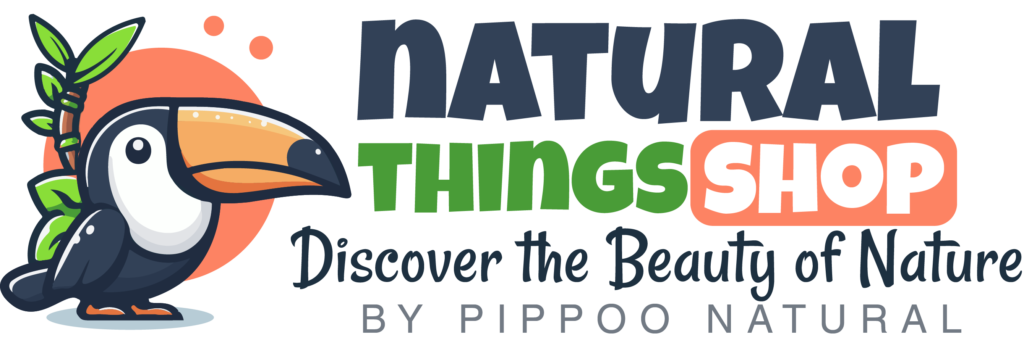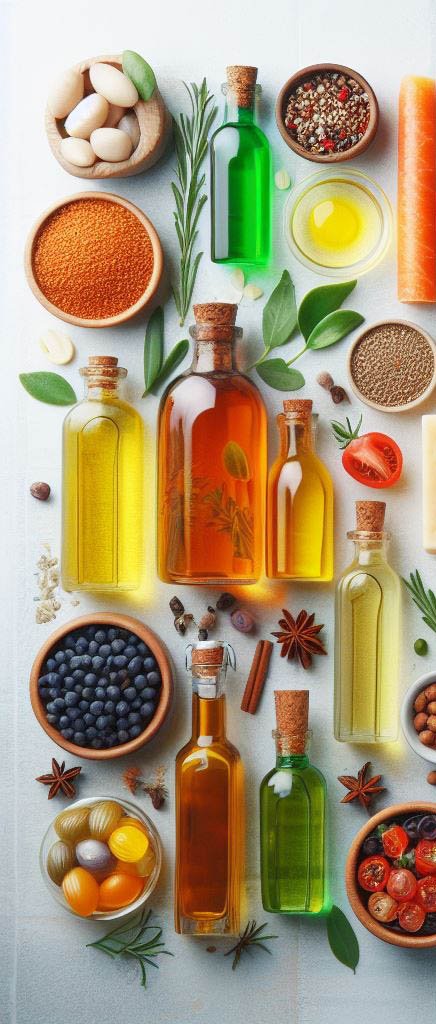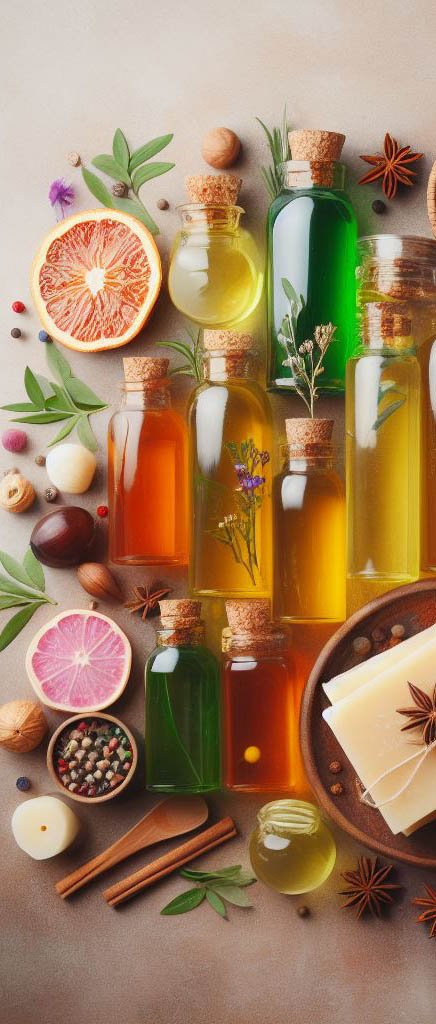Essential Oils For Soapmaking
The world of essential oils is a realm of captivating aromas, wellness, and natural healing. These concentrated extracts from plants hold the essence of their natural fragrance and possess a multitude of potential benefits for both physical and mental well-being. They are indispensable requirements that are also used to make soap and candles.
What are Essential Oils?
Essential oils are the volatile aromatic compounds found in various parts of plants, including flowers, leaves, bark, roots, and fruits. They are extracted through a variety of methods, such as steam distillation, cold pressing, and solvent extraction. These concentrated liquids contain hundreds of active ingredients that contribute to their unique properties and potential benefits.
The Power of Essential Oils
Essential oils have been used for centuries in various cultures for their therapeutic and aromatic properties. Aromatherapy, a form of complementary medicine that utilizes the therapeutic properties of essential oils, has gained widespread popularity in recent years.
Essential oils are believed to work by interacting with the body’s olfactory system, which is responsible for processing smells. When inhaled, essential oils bind to receptors in the nose, sending signals to the brain and influencing various physiological processes.
Potential Benefits of Essential Oils
Research suggests that essential oils may offer a range of potential benefits, including:
Stress reduction: Essential oils such as lavender, chamomile, and ylang-ylang are known for their calming and relaxing properties.
Pain relief: Essential oils like peppermint and eucalyptus may help relieve muscle pain and headaches.
Infection prevention: Essential oils with antibacterial and antiviral properties, such as tea tree and oregano, may aid in preventing infections.
Mood enhancement: Essential oils like bergamot, lemon, and grapefruit can lift mood and promote feelings of positivity.
Safe and Effective Use of Essential Oils
While essential oils offer a wealth of potential benefits, it is crucial to use them safely and effectively. Here are some key considerations:
Dilution: Essential oils are highly concentrated and should always be diluted with a carrier oil, such as coconut oil or jojoba oil, before topical application.
Dosage: Essential oils are potent and should be used in moderation. It is essential to follow the recommended dosage guidelines for each oil.
Individual sensitivities: Some individuals may experience skin irritation or allergic reactions to essential oils. It is advisable to perform a patch test before using a new oil.
Consult a healthcare professional: If you have any underlying health conditions or are pregnant or breastfeeding, it is advisable to consult a healthcare professional before using essential oils.
Exploring the World of Essential Oils
The world of essential oils offers a vast array of possibilities for enhancing your well-being. With proper education, caution, and respect for their power, essential oils can be a valuable addition to your natural health regimen.
ESSENTIAL OILS FOR NATURAL SOAP MAKING
Essential oils for natural soaps are the pure, volatile oils within a plant’s leaf, seed, flower, root, or bark that are captured during a distillation or cold-press process.
To visualize how potent they are, understand that a plant has more oils than just volatile oils. During steam distillation, heavier oils remain as volatile oils are captured to be bottled for your use. This is one of the differences between carrier oils and essential oils.
Carrier oils are made of heavier lipid oils, while essential oils are made up of aromatic volatile oils. Essential oils are not only aromatic, but have also been shown to impact the body in wonderful ways, making them ideal for natural soapmakers.
Making Herbal Infusions to Color Soap
If you’ve ever made tea, then you’ve made an infusion. It’s easy to make a small amount of an herbal infusion that will last for multiple batches of soap. There are two ways to make infusions, either hot or cold. Let’s take a closer look at both.
HOT INFUSION
A hot infusion is much faster than a cold infusion, so if you haven’t planned weeks ahead, use this method.
- First, choose a light-colored liquid oil from your soap recipe to infuse. For example, most recipes call for olive oil, so it’s a great choice. Pour a little less than 1 cup into a saucepan and heat over low heat until it is around 200°F. You do not want to fry the herbs.
- Fill an 8-ounce glass jar with herbs or flowers-or, if using powder or seeds, use 1 heaping tablespoon-and then pour the hot oil over. Screw on the lid and shake gently.
- Allow to cool to room temperature, shaking every 30 minutes.
COLD INFUSION
The cold infusion method takes at least 6 weeks for colors to infuse, but it’s a great option if you have the time and want to get several infusions going at once.
- Fill an 8-ounce glass jar with fresh herbs or flowers-or, if using powder or seeds, use 1 heaping tablespoon-and pour your oil of choice over the top (figure 4.1 ).
- Screw on the lid and leave on your windowsill for 6 weeks, shaking occasionally.
You will find that you need to use only part of these stronger infusions in your recipe for great color. I infuse in olive oil, so I typically replace 25 percent of the olive oil in my recipes with color-infused olive oil. This gives me the color that I want, while leaving more infused oil for the next batch. Either let the colorants settle to the bottom of the jar and then pour carefully, or strain through a cheesecloth before using. To learn more about how to color soap naturally, see Jo Haslauer’s book, Natural Soap Color: Botanical Beauty in Cold Process Soap. Jo is the frontrunner in coloring soap with herbal infusions and creates jaw-dropping colors in soap.
Blending Essential Oils
You don’t want to create a beautiful-smelling natural soap that doesn’t last. By understanding more about essential oils, you can blend them to make sure they last for a year or more.
Top, Middle, and Base Notes
Essential oils are divided into top, middle, and base notes, though many fit in more than one category. By combining them, you ensure that even if your top notes fade slightly, the middle and base notes will last much longer.
- TOP NOTES are the first-impression scents that don’t last long. Examples: lemon, lime, orange, grapefruit, bergamot, lavender, lemongrass, eucalyptus, peppermint, tangerine, and niaouli.
- MIDDLE NOTES are noticeable to the senses after they process the top notes and last longer. Examples: chamomile, cinnamon, clove, clary sage, fir needle, rosemary, geranium, juniper berry, tea tree, thyme, and cypress.
- BASE NOTES are very important because they help middle and top notes last longer in your soap. Try adding small amounts of these: patchouli, frankincense, myrrh, cedarwood, ginger, sandalwood, vetiver, helichrysum, rose, jasmine, ylang-ylang, and neroli.
Dilution
Some essential oils are much stronger than others. As a result, if they are added in equal amounts, one may drown out the other. If you would like to use three or more different oils in your blend, open the bottles and hold them together under your nose, wafting them back and forth. If one overpowers the others, then you will know to add less of that particular oil. Always try to make your blends a few hours before use. They tend to mature and improve, and this will allow you to make any adjustments before use.
Shopping for Essential Oils
With essential oils becoming very popular in recent years, selling them has become a profitable market, prompting many opportunists to try to take advantage of unsuspecting buyers. I’ve encountered some oils that were supposed to be pure and yet were diluted, and others that were replaced with a fragrance oil or a similar-smelling cheaper oil. Unfortunately, you cannot trust labels that say that your essential oil is pure, 100 percent, or natural. I’ve seen labels that falsely claim therapeutic or commercial grade. On the other hand, the top reliable and very expensive essential oil companies are not the only good ones out there.
So how do you find pure essential oils? After all, how the plant was grown, harvested, and processed all matters! First, get to know the company that you are planning to purchase from. Do they discuss purity, where they get their oils, and how they are harvested? Second, look for third-party testing of their products. Some essential oils will be pre-blended for your convenience. Others may be diluted for safe topical use, making them too weak for soapmaking purposes. I like to use Bulk Apothecary, Mountain Rose Herbs, and Starwest Botanicals.
Safety Considerations and Recommendations
Skin is the largest organ on your body and will absorb most of what you apply to it. Essential oils are very potent, and just because they are natural does not mean that they cannot harm you if used improperly. After all, you may find
that you are allergic to some. I have a horrible grass allergy and cannot even smell lemongrass without an allergic reaction. Always perform a patch test on your wrist after diluting to see if you are sensitive to a particular oil. A safe dilution rate for topical application is 2 percent for daily use for adults (12 drops of essential oil to 1 ounce of carrier oil), 1 percent for older people (6 drops per ounce), or 0.5 percent (3 drops per ounce) for children.
When it comes to safety precautions for essential oils, do not follow general advice found on blogs and other websites. You’ll find enough conflicting information to aggravate. Instead, I rely on respected organizations that have trained, experienced herbalists and aromatherapists, like the National Association for Holistic Aromatherapy (NAHA; naha.org/explore-aromatherapy/safety), and the Herbal Academy
(theherbalacademy.com/a-guide-to-essential-oil-safety).
Here are some general precautions for special circumstances concerning commonly used essential oils like those you will find in this book.
Essential Oils to Avoid
Plant essential oils like sassafras, wormwood, pennyroyal, mustard, and elecampane are generally understood to be poisonous. You won’t stumble across them by accident in most stores, though have seen them, so beware.
Cinnamon bark can burn your skin even after being diluted so that you think you’re being stung repeatedly by wasps. (Yes, this knowledge comes from firsthand experience!) Use cinnamon leaf, not bark. There is a big difference!
Other essential oils to avoid because of potential skin irritation are oregano and clove. They are fine in small amounts when blended with other oils, but are an irritant to those with sensitive skin if used in large amounts.
Be aware of possible allergic reactions as well. Those with grass allergies may have difficulties with lemongrass or chamomile. Always do a patch test on your wrist after diluting the oil to 2 percent (12 drops of essential oil to 1 ounce of carrier oil).
Babies and Children Age 5 and Below
Some essential oils are considered hard on small developing bodies and should always be used with caution.
Common Essential Oils To Avoid:
Wintergreen, birch, peppermint, rosemary, and eucalyptus.
Essential Oils That Are Generally Considered Safe:
Cedarwood, blue tansy, cypress, chamomile, geranium, helichrysum, lavender, mandarin, neroli, sandalwood, tea tree, frankincense, bergamot, juniper berry, lemon, patchouli, orange, and spruce.
Pregnant and/or Breastfeeding Women
Though cases reporting problems during pregnancy are from nondilution or oral ingestion at toxic levels, some essential oils should be avoided during pregnancy or breastfeeding, just to be safe. These recommendations are from NAHA and the International Federation of Professional Aromatherapists.
Common Essential Oils To Avoid:
Basil, birch, camphor, hyssop, parsley seed, sage, tansy, tarragon, and wintergreen. Others can build in your body over time and should not be used often: oregano, thyme, clove, and cinnamon.
Older People and Those with Fragile Immune Systems
Common Essential Oils To Avoid:
Birch, wintergreen, thyme, oregano. Some older people or those with lowered immune systems may have more sensitive skin; you should use cinnamon, clove, basil, birch, and peppermint with caution.
Great Essential Oils To Use:
Lavender, marjoram, geranium, lemon balm, Roman chamomile, rose, orange, grapefruit, and ylang-ylang.
The Essential Oils for Soapmaking
So far I’ve discussed only a few of the hundreds of essential oils out there. There are many wonderful reference books that you can turn to in order to learn more about their scents and benefits. Rather than provide a long list, I want to highlight 10 of my favorite essential oils for soapmaking. I’ve also included an essential oils fragrance wheel to depict the rainbow of scents you can add to your homemade soaps.
Lavender
LAVANDULA ANGUSTIFOLIA
Precautions: Always dilute and perform a patch test on your wrist before first-time use.
Try it in: Relaxing Lavender Soap ( here ) or Luxurious Shampoo Bar (here)
A middle to top note with a sweet floral and herbaceous scent. Blends well with lemongrass, patchouli, vanilla, cedarwood, peppermint, lemon, or cypress.
For more information:
Lemon
CITRUS LIMON
Precautions: Though not a danger in soap, phototoxicity or severe burning from the sun or tanning beds can occur when lemon essential oil is applied directly to the skin. Always dilute and perform a patch test on your wrist before first-time use.
Try it in: Coconut Milk Soap ( here ) or Chamomile Tea Soap with Chamomile Flowers ( here )
A top note with a clean citrus scent. Blends well with lavender, ylang-ylang, chamomile, frankincense, rose, neroli, or eucalyptus.
For more information:
Tea Tree
MELALEUCA ALTERNIFOLIA
Precautions: Always dilute and perform a patch test on your wrist before first-time use.
Try it in: Acne Charcoal and Tea Tree Soap (here) or Acne Bentonite Clay and Charcoal Soap (here)
A middle note with a warm, fresh, spicy-camphoraceous scent. Antibacterial, making it great for acne soap. Blends well with lemon, cypress, lavender, rosemary, marjoram, basil, peppermint, lime, or chamomile.
Sweet Orange
CITRUS SINENSIS
Precautions: Always dilute and perform a patch test on your wrist before first-time use.
Try it in: Goat Milk and Honey Soap ( here ) or Uplifting Salt Soap (here)
A top note with a sweet citrus scent. Blends well with basil, ylang-ylang, cinnamon leaf, clove, frankincense, lavender, juniper berry, neroli, or rose.
Rose
ROSA DAMASCENA
Precautions: Always dilute and perform a patch test on your wrist before first-time use.
Try it in: Sensual Rose Soap (here ) or Spring Cutouts (here)
A middle to base note with a rich, sweet, floral scent. Most commonly used as an aphrodisiac. Blends well with chamomile, lemon, lavender, sandalwood, patchouli, clary sage, neroli, or vetiver.
Cedarwood
JUNIPERUS VIRGINIANA
Precautions: Always dilute and perform a patch test on your wrist before first-time use.
Try it in: Pet Shampoo (here)
A base note with a soft woody scent. Blends well with fir, cypress, patchouli, or rose.
Patchouli
POGOSTEMON CABLIN
Precautions: Always dilute and perform a patch test on your wrist before first-time use.
Try it in: Patchouli, Charcoal, and Spirulina Swirl Soap (here)
A base note with an earthy, musky, smoky scent. Blends well with lavender, lime, rose, sandalwood, cedarwood, geranium, frankincense, or orange.
Ylang-Ylang
CANANGA ODORATA
Precautions: Always dilute and perform a patch test on your wrist before first-time use.
Try it in: Ocean Salt Soap (here ) or Goat Milk and Honey Shampoo Bar (here)
A base note with a rich, sweet floral scent. It is known for its ability to calm and is considered an aphrodisiac. Blends well with lemon, eucalyptus, peppermint, grapefruit, vetiver, patchouli, mandarin, or orange.
Lemongrass
CYMBOPOGON FLEXUOSUS
Precautions: Can be a skin irritant to some. Always dilute and perform a patch test on your wrist before first-time use.
Try it in: Aloe and Nettle Herbal Soap (here) or Bug-Away Camping Soap (here)
A top note with a heavy lemon scent. Can be used as a natural insect repellent. Blends beautifully with lavender, tea tree, rosemary, ylang-ylang, geranium, grapefruit, or cedarwood.
Peppermint
MENTHA PIPERITA
Precautions: Not for use with small children or older people. Always dilute and perform a patch test on your wrist before first-time use.
Try it in: Energizing Peppermint and Basil Soap (here) or Cocoa-Mint Soap (here)
A top note with a fresh, minty, herbaceous scent. It is considered to be an uplifting and energizing scent. Blends well with basil, eucalyptus, rosemary, tea tree, lavender, fir, cypress, geranium, or grapefruit.
Sources / References
Natural Things Shop uses only high-quality sources to support the facts in our articles. Read our editorial process to learn more about how we fact-check our content and keep it accurate, trustworthy and reliable.
All the images we use on our site are produced with Dall-e 3 artificial intelligence technology. There are no legal problems regarding copyright.
Kelly Cable
- The Natural Soapmaking Book For Beginners
- DIY Soaps: Using All-Natural Herbs, Spices & Essential Oils




